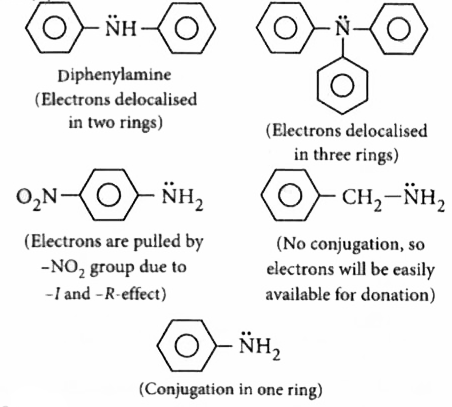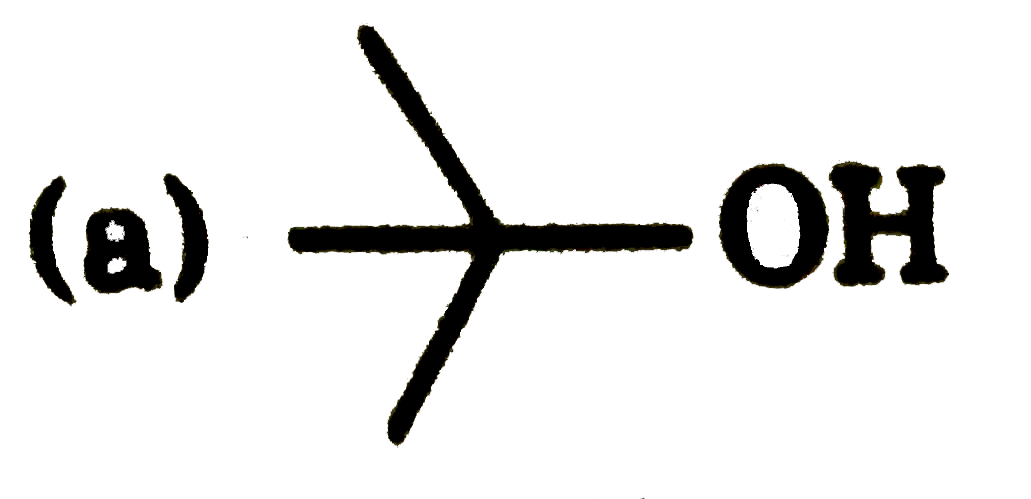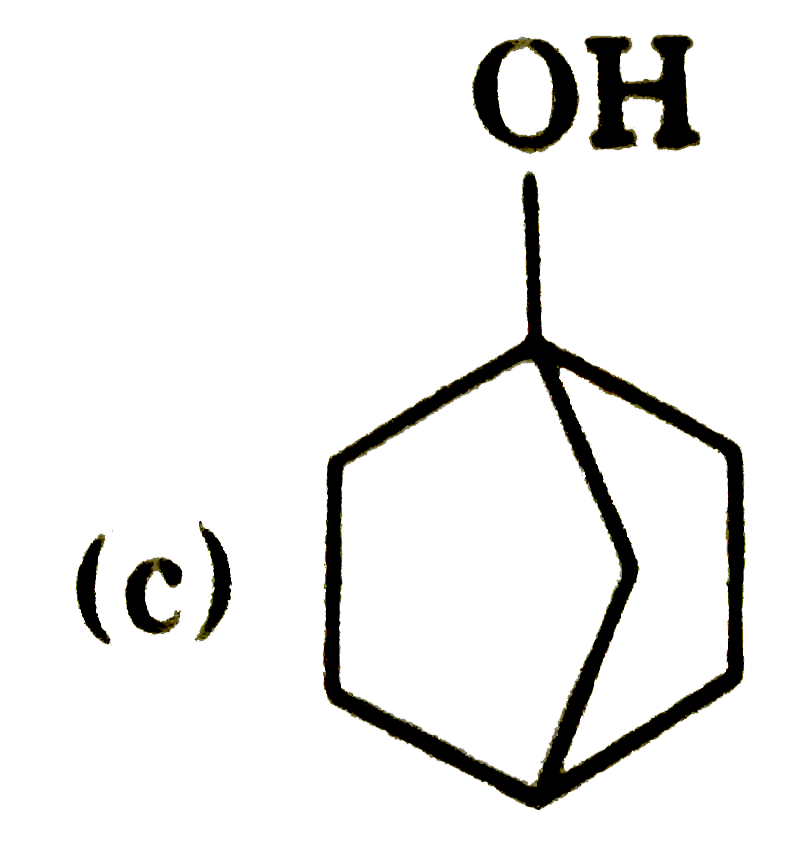Explore topic-wise InterviewSolutions in .
This section includes InterviewSolutions, each offering curated multiple-choice questions to sharpen your knowledge and support exam preparation. Choose a topic below to get started.
| 15401. |
Which of the followings will give colourless solution with hot acidic KMnO_(4) |
|
Answer»
|
|
| 15402. |
What is a biodegradable polymer ? Give an example of a biodegradable aliphatic polyester. |
Answer» SOLUTION :Polymers which disintegrate over a period of TIME in environmental degradation by BACTERIA, etc., are called biodegradable polymers. An example of biodegradable ALIPHATIC polyester is PHBV, IE, Poly-B-hydroxybutyrate-co-B-hydroxyvalerate. It is obtained as under:
|
|
| 15403. |
What is the minimum mass of NaBr which should be added in 200 ml of 0.0004 M-AgNO_(3) solution just to start the precipitation of AgBr ? The value of K_(sp) of AgBr = 4 × 10^(-13) (B Solution : r = 80) |
|
Answer» `1.0 xx 10^(-9)g` or, `0.0004 xx [ Br^(-)] > 4 xx 10^(-13)` `:. [ Br^(-)] > 10^(-9) M` HENCE, MINIMUM mass of NaBr needed `=((200xx10^(-9))/(1000)) xx 103 = 2.06 xx 10^(-8) gm`. |
|
| 15405. |
Upon treatment with ammonical H_(2)S, the metal ion that precipitates as a sulfide is |
|
Answer» Fe(III) |
|
| 15406. |
Which of the following indicates the number of free -OH groups in an oil or fat |
|
Answer» IODINE value |
|
| 15407. |
When 2-butyne is hydrated with dil. H_2SO_(4) in presence of HgSO_(4), it gives ____. |
| Answer» SOLUTION :2-butanone. | |
| 15408. |
Which statement is correct with respect to the property of the elements with increase in atomic number in the carbon family ? |
|
Answer» Their metallic character decreases |
|
| 15409. |
The state of a mole of an ideal gas changed from state A at pressure 2P and volume V follows four different processes and finally returns to initial state A reversibly as shown below in the graph. By intercepting the graph answer the following questions: Which is the kind of process followed from state A to state B? |
|
Answer» isochoric expansion |
|
| 15410. |
The state of a mole of an ideal gas changed from state A at pressure 2P and volume V follows four different processes and finally returns to initial state A reversibly as shown below in the graph. By intercepting the graph answer the following questions: In state D to state A what kind of process is followed? |
|
Answer» ISOBARIC EXPANSION |
|
| 15412. |
There are servral methods for refining metals. Explain a method for refining Zirconium. |
|
Answer» |
|
| 15413. |
Zone refining is a method to obtain |
|
Answer» Very HIGH temperature |
|
| 15414. |
Which of the following can control the photochemical smog? (A) Use of catalytic converters in automobiles. (B) Plantation of trees like pinus, pyrus and vilis etc. (C) Using less sulphur containing fossil fuels |
|
Answer» A and C |
|
| 15415. |
Which one of the following reduces tollens reagent |
|
Answer» FORMIC acid |
|
| 15416. |
Total number of lone pair of electron and P–O–P linkage present in dimer of P_(2)O_(5) are :- |
| Answer» ANSWER :B | |
| 15417. |
Which type of nylon is used in making brushes, synthetic fibres, parachute, ropes and carpets? |
| Answer» Solution : nylon 6, 6 | |
| 15418. |
To observe the effect of concentration on the conductivity ele |
|
Answer» in A CONDUCTIVITY increases , in B conductivity decreases |
|
| 15420. |
The structures represent |
|
Answer» GEOMETRICAL ISOMERS |
|
| 15421. |
What happens when? (i) Urea is heated with acetoacetic ester, (ii) Urea is heated with succinic acid (iii) Urea is treated with sodium hypobromide in alkaline medium, (iv) Urea is treated with acetyl chloride. |
Answer» SOLUTION :(i) Enolic FORM of acetoacetic ester REACTS with urea to form METHYL uracil,  
|
|
| 15422. |
Which one of the following is an amphoteric oxide? |
|
Answer» `Na_(2)O` |
|
| 15423. |
The structure of 4-methyl-2-pentan-1-ol is : |
|
Answer» `CH_(3)CH_(2)CH=CHCH_(2)OH` |
|
| 15424. |
Which of the following is more basic than aniline ? |
|
Answer» <P>DIPHENYLAMINE 
|
|
| 15425. |
Which colloidal sol is administered to a [atient suffereing from arscenic poisoning? |
|
Answer» |
|
| 15427. |
Which of the folowing is a sulphide ore? |
|
Answer» Magnetite |
|
| 15428. |
Write the IUPAC name of the product formed when nitrobenzene is reduced using tin and concentrated hydrochloric acid. |
| Answer» SOLUTION :`underset("NITROBENZENE")(C_(6)H_(5)NO_(2)) overset(Sn//HCl)to underset(underset("Benzenamine")(C_(6)H_(5)NH_(2))`. | |
| 15429. |
Which ne among the following is not a property of salt |
|
Answer» I and II only `pH=-log[H^(+)]` then pH range is taken to 0 to 14 and the acidiity of solution INCRESES with decrease in the value of pH |
|
| 15430. |
V_(1) mL of SO_(2), filled in a tube at 1 atm between a movable frinctionless piston and a porous plug. The tube is left in air till the piston stops moving. The volume V_(1) is found to increase to V_(2). The volume V_(2) contains |
|
Answer» AIR only |
|
| 15431. |
Write the IUPAC name of [Pt(NH_3)_3(H_2O)Cl_2]. |
| Answer» SOLUTION :Triamine AQUA dichlorido PLATINUM (11) | |
| 15432. |
The s-block element used as a catalyst in the manufacture of buna-S rubber is |
| Answer» ANSWER :D | |
| 15433. |
Which of the following polymers is used for coating as a thin layer on the inner side of non - sticking pans ? |
|
Answer» Bakelie |
|
| 15434. |
Which is not an ore of lead? |
|
Answer» Galena |
|
| 15435. |
The reagent choice for the selective reduction of a ketone in the presence of an ester is : |
|
Answer» LITHIUM ALUMINIUM hydride |
|
| 15436. |
Which of the following reactions taking place in the blast furnace during extraction of iron is endrothermic |
|
Answer» `CaCO_(3) rarr CaO + CO_(2)` |
|
| 15437. |
Use Hund's rule to derive the electronic configuration of Ca^(3+) ion, and calculate its magnetic moment on the basis of 'spin-only' formula. |
|
Answer» Solution :Ceriumhas the configuration : `[Xe]4F^(1)5d^(1)6s^(2)` Configuration of `Ce^(3+)` may be written as : `[Xe]4f^(1)`, i.e., there is only one unpaired electron, i.e., n = 1. Hence, MAGNETIC moment is given by : `mu=sqrt(n(n+2))=sqrt(1(1+2))=sqrt(3)=1.73` BM. |
|
| 15438. |
What happens when chromates are kept in acidic solution and dichromates in the alkaline solution ? |
| Answer» SOLUTION :CHROMATES in acidic solution are CONVERTED into dichromate and thus, the solution ACQUIRES orange colour. On the other hand, dichromates in alkaline solution get converted to chromates and the colour of the solution CHANGES from orange to yellow. | |
| 15439. |
Which element of group 14 forms only one hydride ? |
|
Answer» C |
|
| 15440. |
Which of the following statement is/are not true ? |
|
Answer» `Fe_((aq))^(2+)` gives brown colour with `NH_(4)SCN` |
|
| 15441. |
Which of the following represents Freon ? |
|
Answer» Acetylene tetrachloride |
|
| 15442. |
The value of ._m^(^^oo) for acetic acid. If the equivalent conductivity of the given acetic acid is 48.15" at "25^(@)C, calculate its degree of dissociation. |
|
Answer» |
|
| 15443. |
The structural formula of alcohol that on dehydration would give 2-methylpropene as the major product is |
|
Answer» `CH_3CH_2CH_2CH_2OH` |
|
| 15444. |
What is crazy glue or super glue ? |
Answer» Solution :Crazy glue or super glue is a polymer of `alpha`-cyanoacrylate `(CH_2=C(CN)COOCH_3)`. Due to the presence of TWO powerful electron - withdrawing groups `(-CN and -COOCH_3)` , it quickly undergoes polymerization even in presence of basic IMPURITIES such as metal oxides present on the surface of the ordinary glass of give super glue or crazy glue, it has a highe tensile strength , ONE drop of it is clanined to SUPPORT a weight of 200 lb. 
|
|
| 15445. |
Total number of valency electrons in phosphonium ion PH_(4)^(+) is |
|
Answer» 18 |
|
| 15446. |
Whatis the differencebetweena nucleosideand a nucleotide ? |
|
Answer» |
|
| 15447. |
What are ionisation isomers ?Explainwithan example |
|
Answer» Solution :Ionisation isomersarises whenan ionisable counterion (SIMPLE ion) itselfcan act ASA ligand. The exachangeof suchcounterionswithone ormoreligands in the coordinationentity will resultin ionisation isomers. Somemoreexamplefor the isomers. 1. `[Cr(NH_(3))_(4) ClBr]NO_(2) and[Cr(NH_(3))_(4)CI NO_(2)] Br ` 2. ` [Co(NH_(3))_(4) Br_(2)] CI and [Co(NH_(3))_(4) CI Br]Br` |
|
| 15448. |
What volume at STP of CO is required to reduce one mole of Fe_2O_3 in the following reaction Fe_2O_3 + CO to Fe + CO_2 |
|
Answer» `11200 cm^3` |
|
| 15449. |
Write reaction for obtaining: (i) Acetone from acetic acid. (ii) Benzene from toluence. |
Answer» SOLUTION :The DESIRED PRODUCTS are OBTAINED as FOLLOWS: 
|
|
| 15450. |
Which of the following mixture will not be a buffer solution? |
|
Answer» Borax + Boric acid (1:1 MOLAR ratio) |
|










